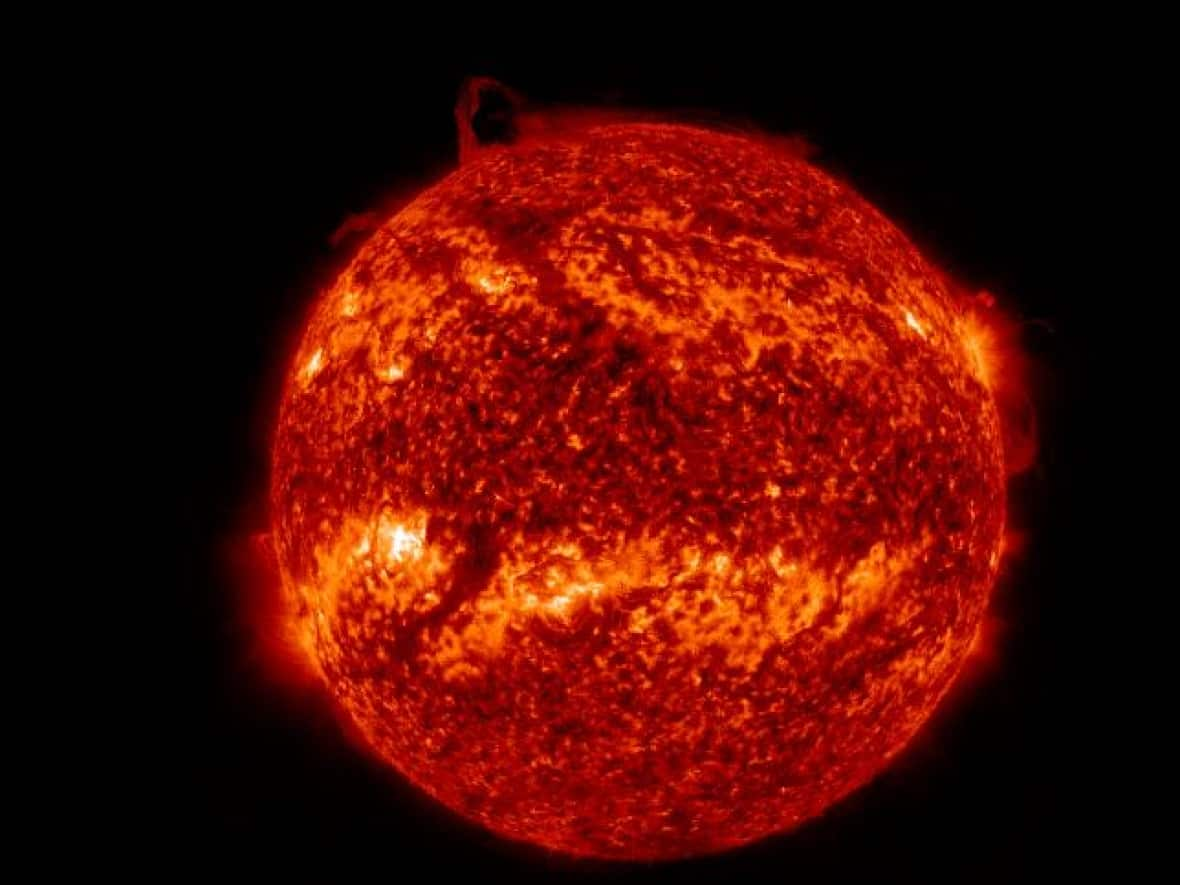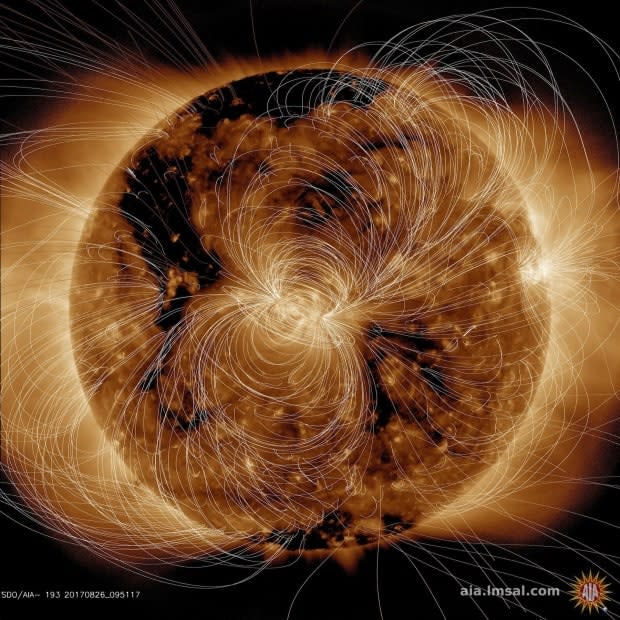No, a piece of the sun didn't just 'break off'

You may have seen stories over the past week or so with headlines like, "Part of the sun breaks free and forms a strange vortex, baffling scientists," or "Unbelievable moment a piece of the sun BREAKS OFF baffles scientists" or even "NASA captures piece of sun breaking off, baffles scientists."
It all started with a harmless, informative tweet.
Tamitha Skov, a space weather forecaster and science communicator, tweeted her excitement that "material from a northern prominence just broke away from the main filament."
"Implications for understanding the sun's atmospheric dynamics above 55° here cannot be overstated!"
But are scientists actually baffled?
Tamitha Skov laughs.
"No," she said.
Instead, they're fascinated.
"The thing is, that first of all, scientists should be allowed to be curious and get excited about things they don't fully understand. Otherwise, what's the job of a scientist?"
Heliophysics — the study of the sun — is a fairly young branch of astronomy, Skov notes, which is why when something different happens on our nearest star, scientists get excited.
The eight-hour event started off with a solar prominence (also known as a solar filament), that began to rise up near the north pole of the sun, which is seen at the top in satellite images. Prominences are made up of plasma, a hot gas of electrically charged hydrogen and helium. They are common on the sun, but it was the location of this one — at the sun's north pole — that was of particular interest to heliophysicists.
"What ended up happening was something that started off as a very normal, average, what we call a polar crown filament. It became this kind of big tower, like a big volcano that was beginning to rise up near the very northern pole," Skov explained.
The prominence was near the top of the north pole, above 60 degrees latitude where it got caught in an electromagnetic wind.

"And it began to yank and pull at some of the material in that prominence," Skov said.
"So it was rising like a hot air balloon, so to speak, up in the air. And as it cooled, instead of just cooling back down and falling, or perhaps erupting, like a normal polar crown filament, part of it got ripped off in this wind. And as it shredded off into this wind, we got to watch it cool down, swirl in a vortex. And that is a very rare, if not, fundamentally new observation."
Understanding the sun
The sun is a complicated beast. It is constantly active and is highly magnetic. Unlike Earth, different parts rotate at different speeds. It also goes through an 11-year cycle of waning and waxing activity, called solar minimums and solar maximums, respectively (we are at the start of a solar maximum, part of solar cycle 25).

"Polar magnetic fields, they vary in different ways," said Liz Jensen, associate research scientist at the Planetary Institute. "So one of the things that happens is that with the solar cycle … it'll flip the magnetic field."
"So the likelihood of having a prominence increases, the closer you get to solar max."
Skov explains that areas of non-charged particles, which are considered neutral, get twisted up by the magnetic fields and then travel to the poles.
And this may be the explanation for what scientists observed: a possible indication that the polarities may be starting to flip. That's what made it so exciting for them; even as our knowledge about the sun is expanding — with more and more satellites devoted to studying it — it still manages to surprise heliophysicists.
So scientists weren't baffled, since they already had some knowledge about this type of activity. But they were thrilled to be able to witness it.
"It's like a lot of problems in nature," Jensen said. "As you get better at understanding one aspect of it, you realize just how challenging it is in other areas. And so, you know, you collect a measurement that answers one of your questions and it raises 10 others."
Beyond the headlines
Skov says she was surprised at what part of her tweet ended up going viral.
"I actually train meteorologists to understand ... how space is kind of incorporated into our pop culture. And the sad thing about it is that it's always incorporated in the wrong way. It's always going to be this phenomenally scary and fundamentally hostile universe where everything that could break will," she said.
While discussing it in her class, she says they thought the mention of polar vortex would garner the most attention, particularly as one had descended across North America. But she was wrong.
"Lo and behold, it ended up not being polar vortex that went viral. It was me saying that a part of the prominence material broke away from the main structure," she said. "It's like none of us saw that coming — not even me — and I've been doing this for a decade."
When asked if she regrets sending the tweet, as it led to misunderstandings, Skov says she doesn't.
"It's a matter of turning that into a teachable moment, into lessons learned, and in to a way that people can actually come back and and realize that, okay, the headlines just blow things out of proportion."


